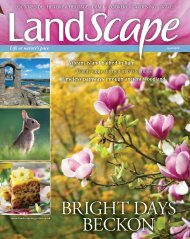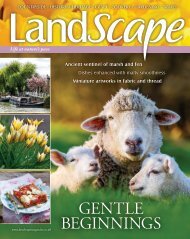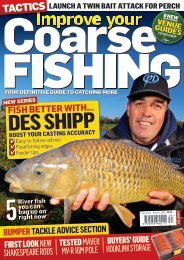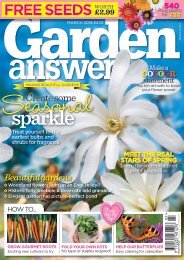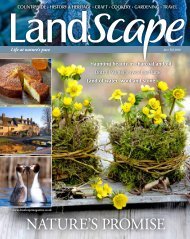Create successful ePaper yourself
Turn your PDF publications into a flip-book with our unique Google optimized e-Paper software.
THE NEXT GENERATION<br />
company asked. I just about dropped the phone.<br />
Two weeks later I was on the boats exploring some<br />
of the most inaccessible places in Scotland.<br />
Watching as an adult female White-tailed Eagle<br />
blackened the sky over my head for the first time<br />
was a moment I will never forget, and I knew I’d<br />
made the right choice.<br />
In the years that followed, I found out just how<br />
much Scotland has to offer in terms of birding<br />
potential, but I realise I’m probably preaching to<br />
the converted. But there’s one place that I’ve been<br />
working at for the past two years that is a little<br />
different.<br />
This place is a bird paradise. It contains<br />
north-west Europe’s largest seabird colony, and I’m<br />
proud to say we have it right here in the UK. But it<br />
comes at a cost; it’s 100 miles out into the middle<br />
of the Atlantic Ocean. If you know your islands<br />
well then you will know straight away where I’m<br />
talking about – the volcanic archipelago of<br />
St Kilda, in the Outer Hebrides.<br />
It’s the UK’s only dual World Heritage site,<br />
putting it in the same category as Machu Picchu. It<br />
has the UK’s highest sea cliffs and largest sea<br />
stacks, but fewer than 5,000 people land on the<br />
island each year, making it a prime spot for<br />
birding (the last permanent residents were<br />
evacuated back in 1930). It’s also a designated<br />
Special Protection Area, National Nature Reserve,<br />
Site of Special Scientific Interest, and Special Area<br />
of Conservation!<br />
But hey, let’s get down to the cold, hard facts;<br />
what birds can you hope to see there? Well, if<br />
seeing over a million seabirds dotted across a<br />
landscape that looks like it’s come from the lost<br />
world isn’t enough to excite you, then some of the<br />
rarer species certainly will.<br />
First, let’s consider the breeding colonies,<br />
St Kilda has the UK’s largest colony of Puffins,<br />
with round about 155,000 pairs, one of the largest<br />
gannetries in the world, at 50,050 pairs, 94% of<br />
GB’s Leach’s Storm Petrels at 45,000 pairs, 5,000<br />
pairs of Manx Shearwaters, nearly 63,000 pairs of<br />
Fulmars, plus Great Skua, Arctic Skua, Snipe,<br />
Wheatear, and of course the St Kilda Wren.<br />
This wee bird is one you’ll definitely be wanting<br />
to tick off on your life list. The best way to find it<br />
is to walk through the old, abandoned village and<br />
listen for its unique song. The bird itself is a third<br />
larger than the mainland Wren, and its song is,<br />
too, to compete with the nearby by sound of<br />
crashing waves! Searching for this LBJ around the<br />
ruins of an ancient settlement is in itself a rare<br />
birding experience not to be missed.<br />
Some of the rarer finds on the islands include<br />
American Herring Gull, Bonaparte’s Gull,<br />
Glaucous Gull, Iceland Gull, White-tailed Eagle,<br />
Waxwing, Night Heron, Purple Heron, Surf Scoter,<br />
Bluethroat, Subalpine Warbler, Laughing Gull,<br />
Green-winged Teal, Yellow-browed Warbler, Hen<br />
Harrier, Baird’s Sandpiper, Buff-bellied Pipit,<br />
Buff-bellied Sandpiper, Common Rosefinch,<br />
Red-backed Shrike, Trumpeter Finch, American<br />
Wigeon, and Red-necked Phalarope. Chatting to<br />
the local seabird warden, Gina Prior, she reminded<br />
me that rare birds on the islands are often facing<br />
Watching as an adult female<br />
White-tailed Eagle blackened<br />
the sky over my head for the first<br />
time was a moment I will never<br />
forget, and I knew I’d made the<br />
right choice<br />
Jules Cox / FLPA<br />
14 February 2016




